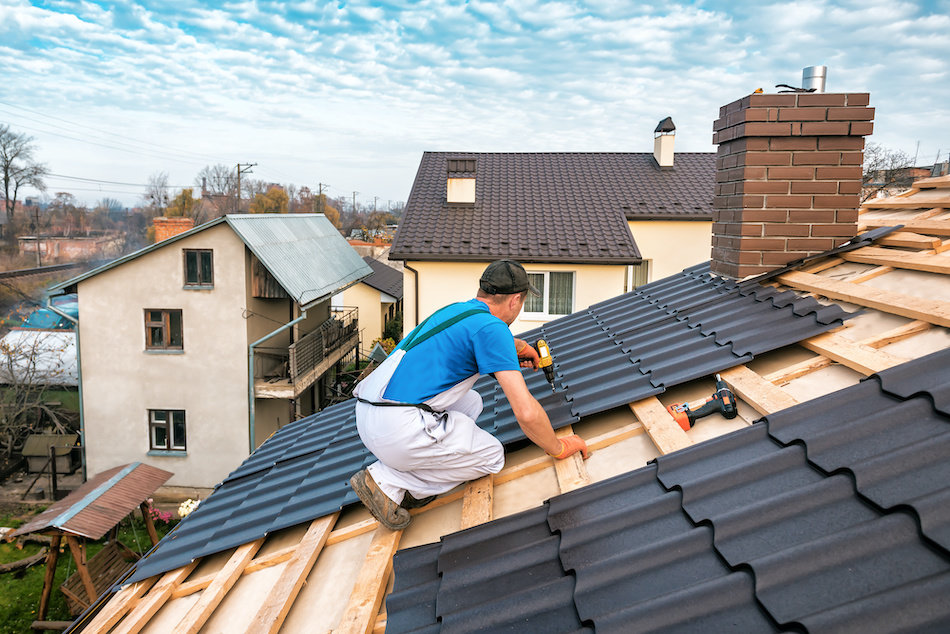Contrasting Prices Amongst Roofing Companies in Gainesville Florida
Wiki Article
Ideal Practices for Ensuring Appropriate Roof Air Flow
A balanced consumption and exhaust air vent ratio, generally 1:300, plays an essential duty, with consumption vents preferably put at the reduced edge of the roof for awesome air entry and exhaust vents at the top for cozy air departure. Keeping insulation away from vents is critical to prevent airflow limitation.Understand Air Flow Fundamentals
Effectively comprehending ventilation fundamentals is essential for guaranteeing the durability and performance of roof systems. Reliable air flow reduces dampness build-up and temperature extremes in the attic, both of which can result in considerable structural damage over time. A well-ventilated roof covering helps in avoiding common issues such as mold and mildew development, timber rot, and ice dams, which can endanger the stability of the roofing materials and the underlying structures.The primary goal of ventilation is to promote the movement of air, enabling for a regular exchange in between the indoor and outdoor atmospheres. This balance is attained via a combination of intake and exhaust vents that collaborate to maintain optimal air movement. Intake vents, usually situated along the eaves or soffits, enable fresh air to enter the attic room, while exhaust vents, often situated at or near the roofing ridge, make it possible for hot, damp air to run away.
Trick variables influencing the effectiveness of roofing air flow include appropriate positioning, sufficient sizing, and guaranteeing that both consumption and exhaust vents are unobstructed. Routine evaluation and upkeep are essential to identify prospective blockages, damage, or inefficiencies in the air flow system, therefore securing the roof's efficiency and resilience.
Kinds Of Roof Covering Vents
Roof vents play a vital role in keeping effective attic room air flow and, by extension, the general health of the roof. Various sorts of roof vents are offered, each with distinct benefits customized to details roof requirements. Ridge vents, for example, are mounted along the roofing's peak, allowing cozy, humid air to run away from the attic. They supply continuous ventilation and mix perfectly with the roofline, making them both reliable and cosmetically pleasing.
Soffit vents are mounted under the eaves and job in tandem with roofing system vents to make certain a well balanced intake and exhaust system. By permitting cooler air to go into from below, soffit vents promote the expulsion of warm air through upper vents. Gable vents, located on the outside wall surfaces of the attic room, deal another efficient remedy, specifically in homes with gable roofing systems.
Analyze Your Existing Ventilation

Following, think about the age and condition of your roofing products and ventilation components. Older systems might not conform with present building codes or may have worn away over time, decreasing their efficiency. Conduct an extensive assessment to determine any indicators of deterioration, such as rust, damages, or spaces that could compromise the system's efficiency.
Additionally, determine the attic room temperature level and moisture levels. High temperature levels and humidity can show inadequate ventilation.
Installment Best Practices
Effective setup of roof covering ventilation systems is extremely important for guaranteeing optimum efficiency and long life. Proper setup starts with understanding the details ventilation needs of the roofing and the structure it covers. This involves calculating the proper ratio of consumption to tire vents, normally adhering to the 1:300 guideline, which states one square foot of air flow for every 300 square feet of attic floor area.
The placement of vents is just as crucial. Intake vents need to be set up at the roof covering's lower edge, typically in the soffits, to permit great air to get in. Exhaust vents, on the other hand, should be installed near or at the roofing system's peak to help with the leave of warm, wet air. This creates an all-natural airflow that assists keep temperature and wetness equilibrium within the attic room.
Seal all air vent links meticulously to stop air leaks and prospective water seepage. Usage top notch materials and adhere to supplier standards to ensure toughness and effectiveness. Additionally, integrating ridge vents with baffles can substantially boost air movement performance by preventing wind-driven rain original site and snow from entering the attic room.
Ultimately, precise installment of roofing air flow systems reduces prospective problems such as mold development, ice dams, and architectural damages, ensuring the roof covering's integrity and the structure's total health and wellness.
Regular Maintenance Tips
Uniformity in upkeep methods is fundamental to ensuring the long-lasting efficiency of roof ventilation systems. Throughout these evaluations, make certain that vents are complimentary of debris, nests, and other blockages that could restrain airflow.
Make use of a soft brush or a vacuum to get rid of dirt and particles from intake and exhaust vents. Be careful not to harm the vent displays or louvers during the procedure.
Correct insulation is equally crucial. Guarantee that attic insulation does not block the vents, as this can drastically restrict air movement. If any kind of insulation has shifted or cleared up, reposition or replace it to preserve an efficient obstacle.
Lastly, change any damaged or missing out on components quickly. Damaged vents, cracked tiles, or shabby flashing can all contribute to inadequate ventilation and ought to be attended to right away. Normal maintenance guarantees that the roof ventilation system operates ideally, thereby extending the life expectancy of the roof itself.
Verdict
Guaranteeing proper roof covering ventilation is vital for keeping the effectiveness and longevity of a roof. Adherence to the 1:300 intake and exhaust air vent ratio, combined with the critical positioning of vents, is vital. Routine semiannual evaluations, particles cleansing, and making certain insulation does not block air movement are important practices. Carrying out these best methods will cultivate a well-ventilated roof, consequently alleviating potential concerns connected to moisture accumulation and too much warm, inevitably lengthening the roofing's lifespan.A well balanced consumption and exhaust vent proportion, commonly 1:300, plays a crucial duty, with intake vents ideally put at the lower edge of the roof for great air access and exhaust vents at the peak for cozy air exit. Intake vents, commonly located along the soffits or eaves, allow fresh air to enter the attic space, while exhaust vents, frequently located at or near the roof covering ridge, enable hot, damp air to get away.
Soffit vents are installed under the eaves and work in tandem with roofing vents to guarantee a well balanced consumption and exhaust system. By permitting cooler air to go into from below, soffit vents assist in the expulsion of warm air via upper vents. Adherence to the 1:300 consumption and exhaust air vent proportion, coupled with the critical placement of vents, is necessary.
Report this wiki page